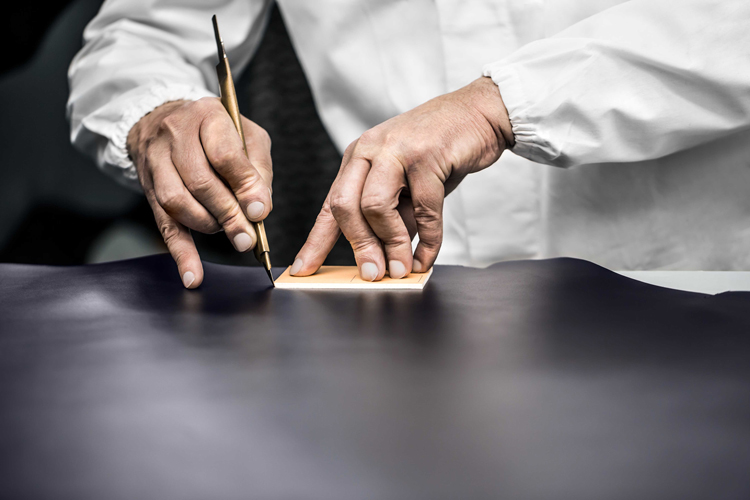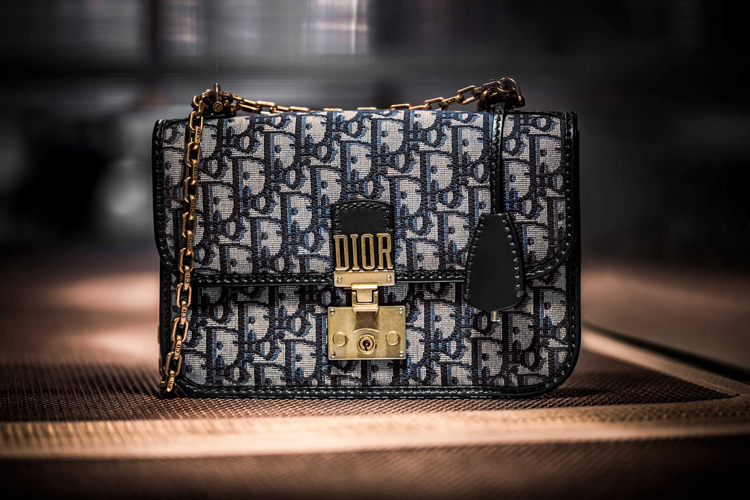
The new Dioraddict in Oblique Canvas bag revisits a timeless style with Maria Grazia Chiuri’s touch of modernity to create a true statement piece.
Its fastener, inspired by old trunks, bears the Dior signature, while the detachable gold metal chain can be replaced by a bohemian shoulder strap. Its canvas comes directly from the House’s archives, having been created by Marc Bohan in 1967, and taken up this year by the Artistic Director.
The making of this bag begins with a visit to Flanders, a family-owned weaving workshop, and the same one that almost fifty years ago was already making this graphic canvas. To begin, a motor unwinds all the bobbins of warp threads necessary to produce the fabric in order to rewind them in a precise order onto one single and very large bobbin, as it takes more than 9,700 threads to produce a Dior Oblique canvas.
Next, a weaver takes charge of placing and tying each thread onto each of the hooks. This stage requires a day’s work. When the jacquard loom is ready, weaving can begin. The back-and-forth motion begins to create the pattern, and bit by bit, the ‘Dior’ motifs appear, with chevrons on the reverse, resulting in an underside which is just as beautiful as the top.

The making continues with the cutting of the canvas at the House’s leatherworking ateliers near Florence, with the patterns positioned using the ‘i’ of each ‘Dior’ as registration points. This method results in the same slanting motif on all models. Next, the artisan selects the burgundy calfskin by relying on his sense of touch and his trained eye. In all, twenty-three elements of leather and canvas are needed to make the bag.

Then the artisan attaches the fastener and applies three coats of black paint and a layer of fixative varnish on all the exposed edges of the bag. After a drying period of more than twenty-four hours, the inscription ‘Christian Dior Paris, Made in Italy’ is embossed with gold ribbon and placed just below the inside pocket. At this stage of manufacture, the artisan can finally sew the various parts together, and does so using a ‘marcapunto’ stitch. With its recognisably graphic aesthetic, it’s a stitch that comes from the tradition of trunk-making. The bag is finally completed with the addition of the detachable gilt metal chain and key, subtly concealed inside its leather cover.
Photography: Pol Baril
READ MORE
Paris Fashion Week SS18: Dior
Dior Collaborates With Artists On Special Project















